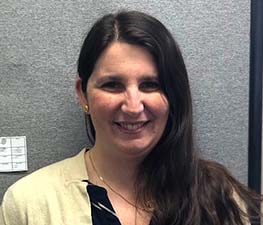
Dr. Gary J. Williams and team provide primary eye and vision care and vision therapy. The office was established in 1940 by Dr. Henry E. Quick. Wellness examinations are provided to assess eye health, prescribe glasses, and fit contact lenses. Eye diseases are also treated and the doctor is available to see patients for eye emergencies. The office also provides the specialty care of vision therapy including the treatment of strabismus and amblyopia, convergence insufficiency and other eye teaming and focusing problems, learning-related vision problems, and the visual problems secondary to head injuries. The practice provides the latest in vision care and optical materials in a traditional setting focused on personalized care and communication.

Developmental Optometrist

Office Manager/Bookkeeper

Optical Manager

Optometric Vision Therapy Coordinator

Optician

Receptionist

Certified Optometric Vision Therapist

Diagnostic Tech

Diagnostic Tech

Insurance Specialist
Our office technology includes, but is not limited to the following specialized equipment:
A Keratometer, also known as a Opthalmometer, is a diagnostic instrument for measuring the curvature of the anterior surface of the Cornea, particularly for assessing the extent and axis of Astigmatism
An instrument that automatically measures the refractive condition of the eye. It is helpful in the process of determining the proper spectacle prescription, especially in those patients with a limited ability to communicate.
An instrument that measures the pressure in the eye, without having to touch the eye. It is very helpful in screening patients for the risk of Glaucoma.
An instrument that precisely measures the pressure in the eye. It is essential in the monitoring those patients who have Glaucoma, or are Glaucoma suspects.
An instrument that quickly determines the peripheral field of vision. It is very helpful in screening patients for possible peripheral vision deficits. Used for: Glaucoma, glaucoma suspects, patients that take certain medications that affect the Retina( such as Plaquinel), field loss due to stroke or other head trauma and medical correction of droopy eyelids (Ptosis) can be approved using the FDT.
An instrument that precisely determines the peripheral field of vision. It is essential in monitoring those patients who have Glaucoma, or are Glaucoma suspects.
An instrument that quickly captures high quality digital images of the retina and stores them in a computerized database. It is very helpful in documenting and monitoring patients with retinal disease or anomalies.
Ocular Coherence Tomography (OCT) is a non-invasive imaging technique that uses light to create detailed, cross-sectional images of the retina and optic nerve to diagnose and monitor various eye conditions such as glaucoma, macular degeneration, and reactions to certain medications.

